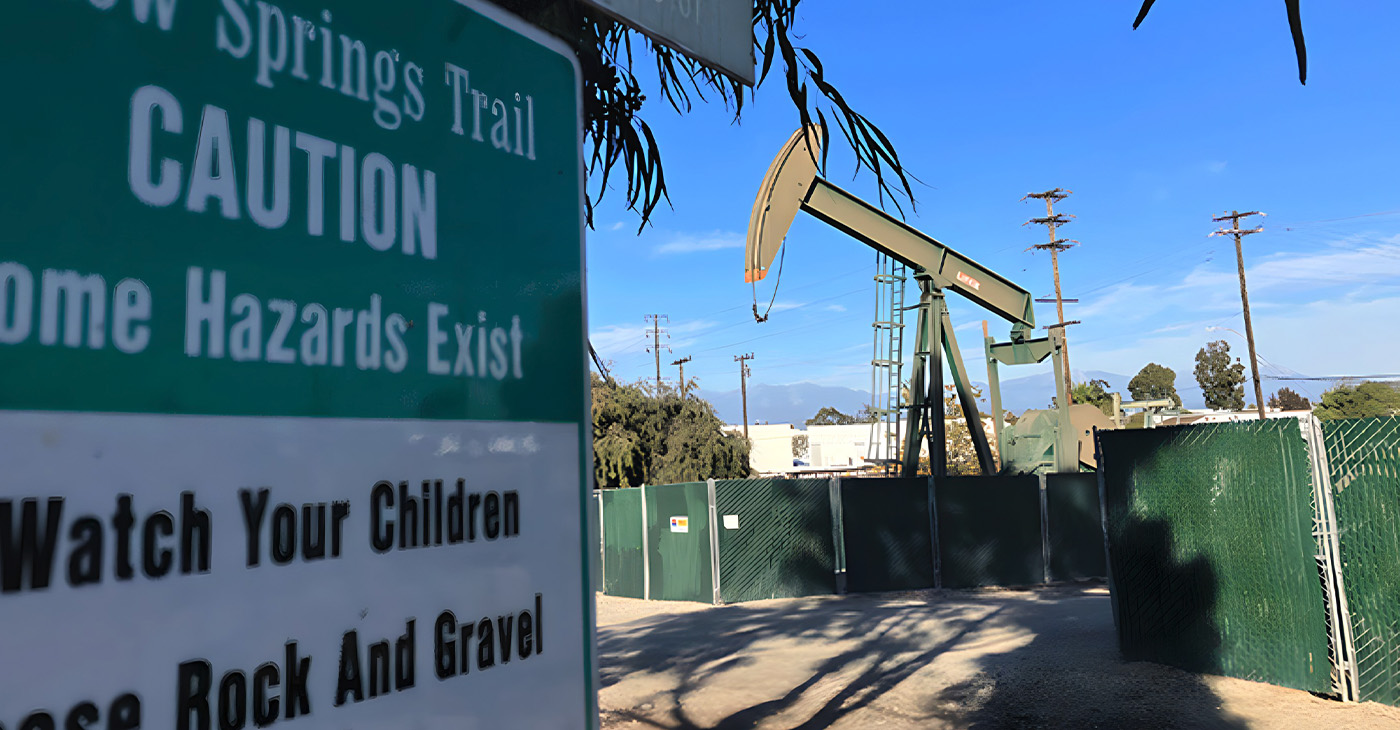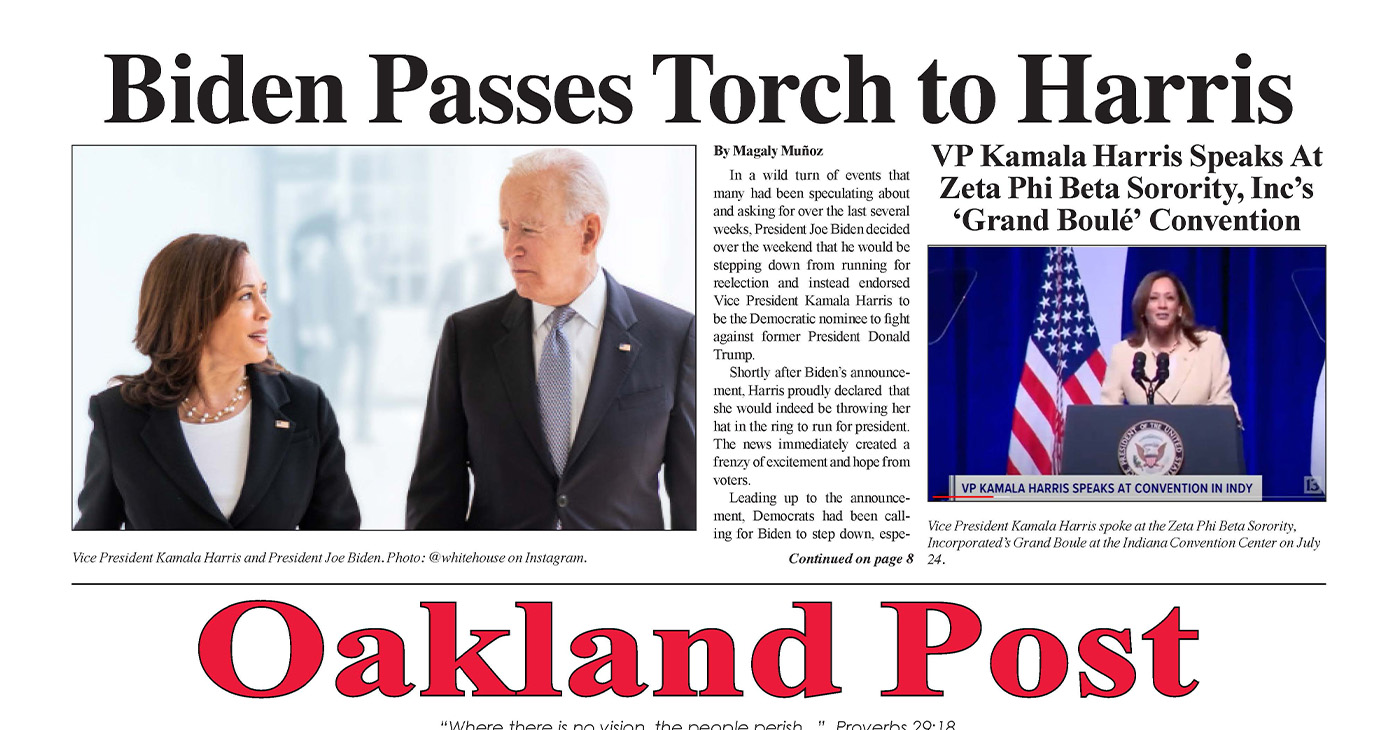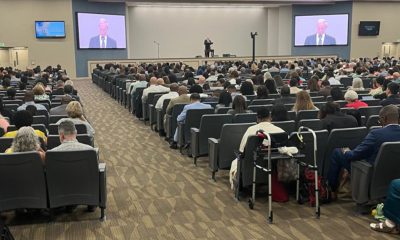Community
Black, Latinx Californians Face Highest Exposure to Oil and Gas Wells
More than 1 million Californians live near active oil or gas wells, potentially exposing them to drilling-related pollution that can contribute to asthma, preterm births and a variety of other health problems. A new study appearing in the March 23 edition of the journal GeoHealth finds that these Californians are disproportionately Black, Latinx or low-income, and Black Californians are more likely to live near the most intensive oil and gas operations.

By Kara Manke
More than 1 million Californians live near active oil or gas wells, potentially exposing them to drilling-related pollution that can contribute to asthma, preterm births and a variety of other health problems.
A new study appearing in the March 23 edition of the journal GeoHealth finds that these Californians are disproportionately Black, Latinx or low-income, and Black Californians are more likely to live near the most intensive oil and gas operations.
“When we look across the state of California over the past 15 years, Black, Latinx and low-income people consistently were more likely to live near oil and gas wells,” said study first author David González, a President’s Postdoctoral Fellow at the University of California, Berkeley. “Black people, in particular, were more likely to be in places that had the most intensive oil and gas production, which can lead to more exposure to harmful chemicals.”
The study also found that while oil and gas production in California has declined over the past 15 years, the rate of decrease has been slower near racially marginalized communities.
Earlier work led by González found that disparities in exposure to oil and gas wells can be traced back to the 1930s in Los Angeles and linked to the historical policy of redlining.
“What’s emerging is that oil and gas wells have been disproportionately impacting racially marginalized and low-income communities in California for generations,” González said.
“We found that redlining was strongly associated with the disproportionate siting of oil and gas wells in historically racially marginalized communities, and we’re still seeing disproportionate siting and production of oil and gas infrastructure in many of these same neighborhoods today.”
Oil and gas production is a complex process that can release an array of hazardous pollutants: Drilling rigs and other heavy machinery emit diesel exhaust, active wells can release toxic volatile organic compounds, and in some cases, the chemicals that are used to extract oil from underground reservoirs can seep into the water supply, endangering those who rely on groundwater for drinking.
Operating heavy drilling machinery in residential areas can also create other stressors, like light and sound pollution.
Mounting evidence suggests that these pollutants pose a variety of health risks to those who live close to wells — that distance usually is defined as living within 1 kilometer (km), or a little over half a mile.
The California climate measures signed into law last September by Gov. Gavin Newsom contained provisions that would ban new drilling within approximately 1 km of homes, schools, hospitals and parks and provide protections for those living near existing wells.
But in early February, oil companies succeeded in putting the law on hold until voters decide its fate in a November 2024 ballot referendum.
“The weight of scientific evidence clearly demonstrates that people living near oil and gas development have a greater risk of respiratory problems and adverse birth outcomes,” said Seth B.C. Shonkoff, executive director of PSE Healthy Energy and an associate researcher at UC Berkeley’s School of Public Health. “Attempts to undermine or delay California’s landmark setback law contradict the science and increase public health risks, particularly for Black and brown communities.”
Given the complexity of oil and gas operations, many studies only consider proximity to wells when investigating the health risks of oil and gas production. However, this focus on proximity may mask additional disparities in the hazards posed by more intensive production, the researchers said.
The current study, which found that Black Californians are more likely to be exposed to more intensive oil productions, might help explain why some studies have found that the health risks associated with living near wells are higher for racially and socioeconomically marginalized people.
Rachel Morello-Frosch, professor at UC Berkeley’s School of Public Health and in the Department of Environmental Science, Policy and Management and the study’s senior author, said she hopes the paper makes clear the health equity implications of the oil and gas industry in California.
“This study advances scientific understanding about the origins and persistence of racialized inequities in exposure to oil and gas extraction in California, which in turn has significant implications for regulatory interventions that center environmental justice in protecting community health from this well-documented environmental hazard,” Morello-Frosch said.
In addition to the 1 million Californians who live near active or retired wells, nearly 9 million — 20% of the population — live close to wells that have been plugged and abandoned, some as early as the 1800s. While wells that have been plugged in recent years are held to rigorous environmental standards, other studies have found that some of these older wells may still be emitting toxic chemicals that could be harmful to those living nearby.
“The most common exposure to oil and gas infrastructure in California was to plugged and abandoned wells,” González said. “From a public health perspective, it’s not clear how worried we should be about plugged wells. But given how many people live near them, I think it’s important to ask more questions and take care when we retire wells so we don’t create problems down the road.”
Additional study co-authors include Claire M. Morton of Stanford University; Lee Ann L. Hill, Drew R. Michanowicz and Robert J. Rossi of PSE Healthy Energy; and Joan A. Casey of the University of Washington. This study was supported by the California Air Resources Board (#18RD018) and National Institute of Environmental Health Sciences (R00 ES027023)
Activism
Oakland Post: Week of July 24 – 30, 2024
The printed Weekly Edition of the Oakland Post: Week of July 24 – 30, 2024

To enlarge your view of this issue, use the slider, magnifying glass icon or full page icon in the lower right corner of the browser window. ![]()
#NNPA BlackPress
NNPA NEWSWIRE — Reflecting on his long career, Biden expressed deep gratitude and pride. “Nowhere else on earth could a kid with a stutter from modest beginnings in Scranton and Claymont one day sit behind the Resolute Desk in the Oval Office. But here I am. That’s what makes America special,” he remarked, his voice tinged with emotion.
The post first appeared on BlackPressUSA.

Biden: Our Democracy Demands New Leadership
By Stacy M. Brown, NNPA Newswire Senior Correspondent
@StacyBrownMedia
In an impassioned address from the Oval Office, President Joe Biden laid bare his decision to step down from the 2024 presidential race, urging Americans to embrace a new generation of leadership. “Saving democracy is more important than any title. It’s time to pass the torch to younger voices,” Biden declared in an address that signaled a transformative shift in American politics.
Following his decision over the weekend to bow out of the race for re-election, Biden’s announcement was a clarion call for renewal. Stressing the moment’s urgency, Biden emphasized that the future of democracy depends on fresh, dynamic leadership. He endorsed Vice President Kamala Harris as the embodiment of this new era. “Years ago, I described myself as a transitional candidate, and now it’s time for that transition to take full effect,” Biden said, positioning Harris as the future of the Democratic Party.
While refraining from mentioning former President Donald Trump by name, Biden clarified that he views the twice impeached and 34 times convicted felon Republican presidential nominee as a fundamental threat to democratic values. “My record as president, my leadership on the global stage, and my vision for America’s future all merited a second term,” Biden stated. “But nothing can stand in the way of safeguarding our democracy. That includes personal ambition. So, I’ve decided the best path forward is to pass the torch to a new generation.”
Reflecting on his long career, Biden expressed deep gratitude and pride. “Nowhere else on earth could a kid with a stutter from modest beginnings in Scranton and Claymont one day sit behind the Resolute Desk in the Oval Office. But here I am. That’s what makes America special,” he remarked, his voice tinged with emotion.
Biden acknowledged that doubts about his ability to defeat Trump influenced his decision. “I revere this office, but I love my country more,” he said. “It’s been the honor of my life to serve as your president. But in defense of democracy, which is at stake, I think it’s more important than any title.”
Biden said he is determined to address crucial issues for the remainder of his term. His agenda includes lowering family costs, defending personal freedoms, protecting voting rights, combating cancer, addressing gun violence, and advocating for Supreme Court reform. Internationally, he said he aims to strengthen NATO, support Ukraine, and seek an end to the conflict in Gaza.
Biden’s endorsement of Harris has galvanized the Democratic Party, with Harris swiftly securing the backing of a majority of Democratic delegates. “I’m not going anywhere,” Biden reassured his campaign staff, now supporting Harris. “I’m going to be out there on the campaign trail with her, working tirelessly as both a sitting president and a campaigner.”
The landmark address, along with Biden’s anticipated speech at the Democratic National Convention, could prove pivotal in defining his legacy. “In a few months, Americans will decide the direction of our nation’s future,” Biden stated. “I have made my choice. I’ve expressed my views. Now the decision is in your hands, the hands of the American people.”
In the days before his decision, Biden confided in close advisors about his concerns regarding another run against Trump. His acknowledgment of those doubts underscored his commitment to putting the country’s needs above his ambitions. “The defense of democracy must come before all else,” he reiterated.
As Biden prepares to support Harris in her campaign, he remains focused on his presidential duties. His administration continues to push for significant legislative achievements, reinforcing his enduring commitment to the American people. “In just a few months, the American people will choose the course of America’s future,” Biden said. “The great thing about America is here, kings and dictators do not rule. The people do. History is in your hands. The power is in your hands. The idea of America lies in your hands.”
The post first appeared on BlackPressUSA.
#NNPA BlackPress
PRESS ROOM: Reparations Movement Partners Globally Mourn the Passing of U.S. Congresswoman Sheila Jackson-Lee
NNPA NEWSWIRE — we acknowledge the powerful legacy of U.S. Congresswoman Sheila Jackson-Lee. She was a steadfast leader in the fight for reparatory justice, carrying forward the legislative baton from the late U.S. Congressman John Conyers in 2018.
The post PRESS ROOM: Reparations Movement Partners Globally Mourn the Passing of U.S. Congresswoman Sheila Jackson-Lee first appeared on BlackPressUSA.

[July 22, 2024 – Chicago, IL] With an extremely heavy heart and a profound sense of loss, we acknowledge the powerful legacy of U.S. Congresswoman Sheila Jackson-Lee. She was a steadfast leader in the fight for reparatory justice, carrying forward the legislative baton from the late U.S. Congressman John Conyers in 2018. Her relentless efforts nearly brought HR 40 to passage in the House of Representatives in 2022, missing by just one vote. Her leadership was pivotal in advancing the bill out of the Judiciary Committee in April 2021 after a historic debate. Even after her diagnosis, Rep. Jackson-Lee fiercely collaborated with reparations leaders, pushing for President Biden to establish an HR40-like commission by Executive Order. She believed this executive path was crucial for addressing centuries of injustice. Despite setbacks in meetings with the President’s team, she remained optimistic and urged us to stay ready for progress.
The Earn the Black Vote Collaborative formed in 2023 in response to her urging to continue the fight for reparations. On April 25, 2024, the Collaborative released a poll showing significant support for President Biden to issue an Executive Order for Reparations. Congresswoman Jackson-Lee championed the poll’s findings, emphasizing the critical importance of reparations to African American and progressive communities. Her vision was clear: an Executive Order to create a federal reparations commission could drive transformative Black voter turnout and move the ball toward justice. She had wanted the Executive Order done by Juneteenth. Tragically, just a month after Juneteenth, she left us. We have lost a great leader for reparatory justice. In honor of her legacy, we call for the establishment of the Executive Order by President Biden. We extend our deepest condolences to Representative Jackson-Lee’s family. We call on reparation activists, leaders, and legislators globally to stand with us as we honor her legacy. May the Ancestors and the Creator receive her with joy.
About the Author:
Kamm Howard is a national and international reparations scholar and activist working for over 20 years building grassroots movements to obtain reparations for African descendants in the United States.
CONTACT:
Reparations United Phone: 773-985-2990
Email: kamm@reparationsunited.org Website: https://reparationsunited.org/
The post PRESS ROOM: Reparations Movement Partners Globally Mourn the Passing of U.S. Congresswoman Sheila Jackson-Lee first appeared on BlackPressUSA.
-

 Arts and Culture3 weeks ago
Arts and Culture3 weeks agoRooted in Tradition: The Intricate History of Black Hair Braiding
-

 Bay Area4 weeks ago
Bay Area4 weeks ago“I Will Not Be Bullied,” Says Oakland Mayor Sheng Thao
-

 Bay Area2 weeks ago
Bay Area2 weeks agoPG&E Increases Rates While Bay Area Households Are Struggling to Stay Afloat
-

 Business3 weeks ago
Business3 weeks agoGov Newsom: Raising Fast Food Minimum Wage to $20 Pays Off as Jobs Multiply in Industry
-

 Activism4 weeks ago
Activism4 weeks agoOpponents of Mayor Sheng Thao Are Calling on Her to Resign Following FBI Raid
-

 Community1 week ago
Community1 week agoHundreds Come to Jehovah’s Witnesses’ Assembly Hall for Three-Day Program of ‘Good News’ in Fremont
-

 Bay Area2 weeks ago
Bay Area2 weeks agoJuneteenth Mass Shooting Suspect Charge with Multiple Counts of Felony Assault by Alameda County DA Pamela Price
-

 Activism4 weeks ago
Activism4 weeks agoOakland Coliseum Sale to AASEG: A Model for Community Development and Inclusion






















































